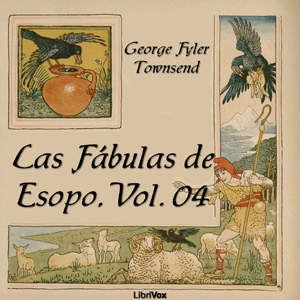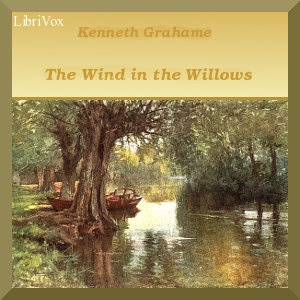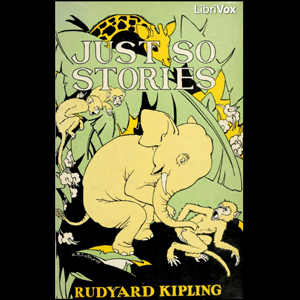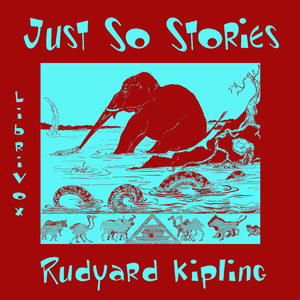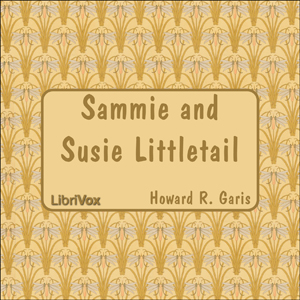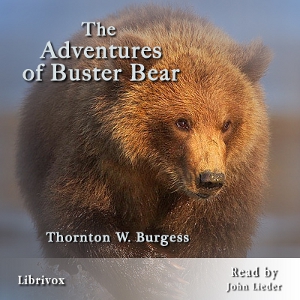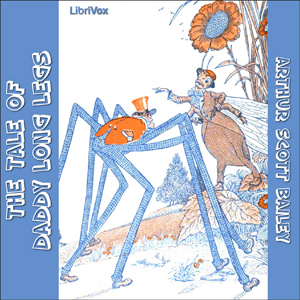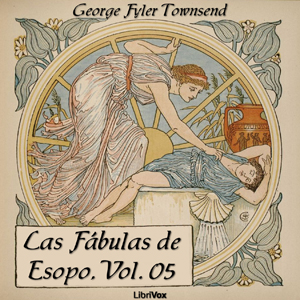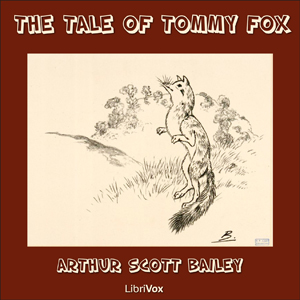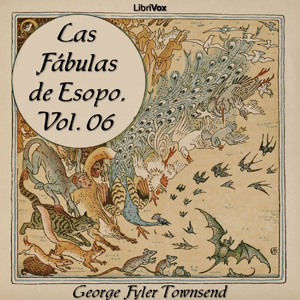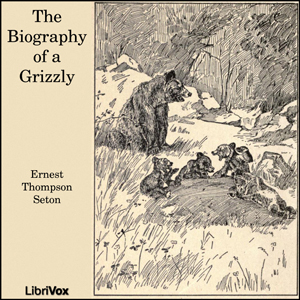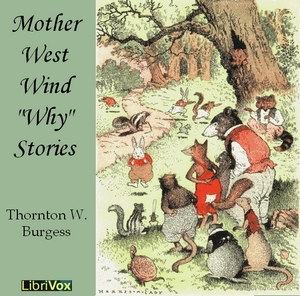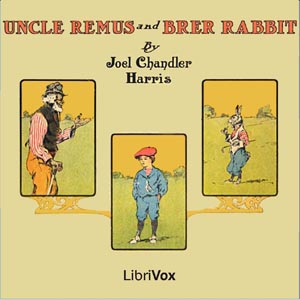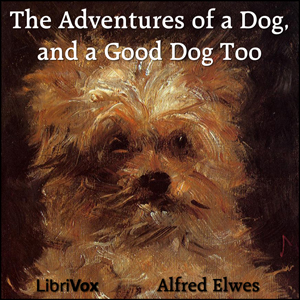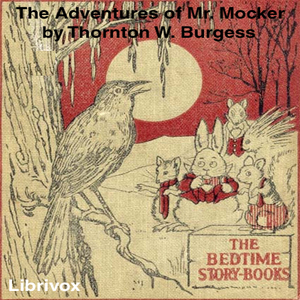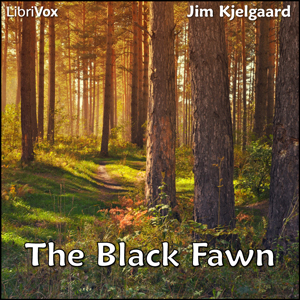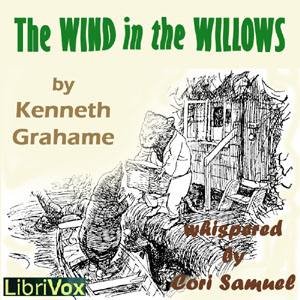Black Beauty is Anna Sewell’s first and only novel. The story is told in the “first person” (or first horse) as an autobiographical memoir of a highbred horse named Black Beauty, from his carefree days as a foal on an English farm, to his difficult life pulling cabs in London, to his happy retirement in the country. Along the way, he meets with many hardships and recounts many tales of cruelty and kindness. Each short chapter recounts an incident in Black Beauty’s life containing a lesson or moral typically related to the kindness, sympathy, and understanding treatment of horses. (Summary from wikipedia.org)
49 episodes
A beautifully illustrated children’s picture book featuring Johnny Crow who made a garden in which a variety of animals do bizarre things in rhyme.Listen to the audio while you view the pictures on gutenberg.org (Summary by Jim)
1 episodes
This version of the classic tale of the three bears has a heroine named Golden Hair. The jolly bears, instead of chasing her away from their home, come to live with her at Grandmother's house. The recording can be enjoyed by itself, or you can read along with the Library of Congress facsimile version from the International Children's Digital Library: Here.
1 episodes
This version of the classic tale of the three pigs, their houses and a wolf, published in 1904, has a new twist in its second half. This recording can be enjoyed by itself, or you can read along with the Library of Congress facsimile version from the International Children's Digital Library: Here.
1 episodes

Many readers will already be familiar with Uncle Remus’ favorite animal characters – Br’er Rabbit and Br’er Fox among them – and some of the popular tales concerning them. (To this day, “tar baby” as an expression for a particularly sticky situation that is almost impossible to solve, has passed into the English language and common use.) Even people who have never read any of these tales will know exactly why you don’t throw a rabbit into a briar patch, mainly because Walt Disney produced his first movie ever to use professional actors with animation, called “Song of the South”, based on the Uncle Remus tales.
Joel Chandler Harris, a newsman in Georgia, grew up listening to folktales told by the local black population. Later, he published his version of these tales in a series of stories printed in the “Atlanta Constitution.” The tales of, and by, Harris’ chief character Uncle Remus, an old black man scrabbling to make his living in the post-Civil War South, were extremely popular and widely read. Harris’ use of innovative spelling to give the reader a sense of the black dialect was considered novel.
While this is not a book that will pass a current political correctness test, due to its use of labels for black folks which have gone out of polite conversation, Uncle Remus is a largely sympathetic look at post-war plantation life. Uncle Remus himself is a warm, folksy man of good humor and dry wit, and after finishing his animal stories, the remaining sayings and tales are a moment of history frozen in amber. (Summary by Mark)
46 episodes
Born in Victorian London on July 28th, 1866, Beatrix Potter created some of the best-loved children’s stories of all time. Starting with Peter Rabbit and moving through the rest of these delightful tales, the Great Big Treasury of Beatrix Potter will warm the hearts both of those who remember her fondly from their childhoods and those who discover for the first time the magic of these timeless stories. (Summary by Chip)
19 episodes

This much-loved story follows a group of animal friends in the English countryside as they pursue adventure ... and as adventure pursues them! The chief characters - Mole, Rat, and Toad - generally lead upbeat and happy lives, but their tales are leavened with moments of terror, homesickness, awe, madcap antics, and derring-do.
Although classed as children's literature, The Wind in the Willows holds a gentle fascination for adults too. The vocabulary is decidedly not "Dick and Jane", and a reader with a love of words will find new ones to treasure, even if well-equipped for the journey. Parents will appreciate the themes of loyalty, manners, self-restraint, and comradeship which are evident throughout the book. When the characters err, they are prompt to acknowlege it, and so a reading of this book can model good behavior to children, who will otherwise be enchanted with the many ways in which the lives of these bucolic characters differ from modern life.
This book was so successful that it enabled the author to retire from banking and take up a country life somewhat like that of his creations. It has been adapted for screen, stage, and even a ride at the original Disneyland.(Summary by Mark F. Smith)
12 episodes
A beautifully illustrated children’s picture book. Listen to the narration while you view (on gutenberg.org) a variety of delightful animals doing strange things such as the kangaroo who tried to paint the roses blue. This is a follow up to Johnny Crow’s Garden. (Summary by Jim)
1 episodes
Andrew Lang's Blue Fairy Book (1889) was a beautifully produced and illustrated edition of fairy tales that has become a classic. This was followed by many other collections of fairy tales, collectively known as Andrew Lang's Fairy Books. -Wikipedia
37 episodes
The classic Aesop's Fables have been translated to every language for hundreds of years. The fables, told in the form of allegories, give us universal, worldly advice. The use of animals and ancient gods makes the lessons unbiased and impartial. Short and smart, these fables entertain and enrich our lives. In this volume you will find 30 of the 300 fables we offer you in Spanish.Las clásicas Fábulas de Esopo han sido traducidas a todos idiomas por cientos de años. Las fábulas, en forma de alegorias, nos dan consejos en una forma universal. El uso de animales y dioses antiguos hace que las lecciones sean imparcial. Cortitas y sabias, cada fábula nos entretiene y enriquese nuestras vidas. En este volúmen encontrará 30 de las 300 fábulas que le ofrecemos en Español. (Summary by Fedra)
30 episodes
The classic story of how Rat, Mole, and the other river-bankers saved Toad from his excesses. This book has it all: excitement, sentiment, destruction of private property (plenty of that), paganism, and a happy ending. The prose is beautiful and occasionally requires the use of a dictionary - I had to look up “asperities.” Written as a children’s story, The Wind in the Willows is enjoyed by many grown-ups who relish Grahame’s ability to evoke the long summer days of childhood. (Summary by Adrian Praetzellis)
12 episodes
These whimsical short stories offer fanciful answers to a dozen of childhood's favorite "why" and "how" questions. With their generous sprinkling of nonsense words as well as a delightfully rhythmic storytelling feel, they seem to have been written to be read aloud. (summary by rachelellen)
12 episodes
One of Bailey's "Sleepy-Time Tales," this is the story of Timothy Turtle, a grumpy old turtle trying to live his life alongside Black Creek. Timothy's adventures lead him to encounters with other Black Creek creatures, Fatty Coon, Mr. Crow, Brownie Beaver, Peter Mink, Ferdinand Frog, and even the local boy, Johnnie Green. (Summary by Robin Cotter)
8 episodes
The stories, first published in 1902, are fantastic accounts of how various natural phenomena came about. The original editions of Just So Stories were illustrated with woodcuts by Kipling himself. Read along online and see the illustrations at mainlesson.com. Each story is accompanied by a poem, in a somewhat ballad style. Many of the stories are addressed to "Best Beloved" (they were first written for Kipling's eldest daughter, Josephine, who had died during an outbreak of influenza in 1899), and throughout they use a comically elevated style inspired by the formal speech of India, full of long and improbable-sounding words, some of them made up. As a result, it is a delight to read them aloud, and easy to memorise passages from them. (Summary from Wikipedia)
12 episodes
Arthur Scott Bailey (1877 – 1949) was author of more than forty children's books. Bailey's writing has been described thusly by the Newark Evening News: "Mr. Bailey centered all his plots in the animal, bird and insect worlds, weaving natural history into the stories in a way that won educator's approval without arousing the suspicions of his young readers. He made it a habit to never 'write down' to children and frequently used words beyond the average juvenile vocabulary, believing that youngsters respond to the stimulus of the unfamiliar."
http://en.wikipedia.org/wiki/Arthur_Scott_Bailey
19 episodes

If you don't like Christmas stories, don't read this one!
And if you don't like dogs I don't know just what to advise you to do!
For I warn you perfectly frankly that I am distinctly pro-dog and distinctly pro-Christmas, and would like to bring to this little story whatever whiff of fir-balsam I can cajole from the make-believe forest in my typewriter, and every glitter of tinsel, smudge of toy candle, crackle of wrapping paper, that my particular brand of brain and ink can conjure up on a single keyboard! And very large-sized dogs shall romp through every page! And the mercury shiver perpetually in the vicinity of zero! And every foot of earth be crusty-brown and bare with no white snow at all till the very last moment when you'd just about given up hope! And all the heart of the story is very,—oh very young!
For purposes of propriety and general historical authenticity there are of course parents in the story. And one or two other oldish persons. But they all go away just as early in the narrative as I can manage it.—Are obliged to go away! Yet lest you find in this general combination of circumstances some sinister threat of audacity, let me conventionalize the story at once by opening it at that most conventional of all conventional Christmas-story hours,—the Twilight of Christmas Eve." (excerpt from the text)
3 episodes
Once upon a time there lived in a small house built underneath the ground two curious little folk, with their father, their mother, their uncle and Jane Fuzzy-Wuzzy. Jane Fuzzy-Wuzzy was the nurse, hired girl and cook, all in one, and the reason she had such a funny name was because she was a funny cook. She had long hair, a sharp nose, a very long tail and the brightest eyes you ever saw. She could stay under water a long time, and was a fine swimmer. In fact, Jane Fuzzy-Wuzzy was a big muskrat, and the family she worked for was almost as strange as she was. (excerpt from text)
31 episodes
The Adventures of Buster Bear is another set of children’s stories by the conservationist, Thornton W. Burgess. Buster Bear has many adventures and misadventures as he meets the different characters in the Green Forest near the Laughing Brook. Along the way, we learn about the habits of Buster and his friends and we learn little lessons about life such as the importance of sharing, not stealing, making friends and not sticking one's head into tin pails. (Summary by John Lieder)
6 episodes
Several of La Fontaine's fables, translated into English by W. T. Larned. (Summary by bge1234)
19 episodes
Arthur Scott Bailey (1877 – 1949) was author of more than forty children's books. He was born on November 15, 1877, in St. Albans, Vermont, United States, the second child of Winfield Scott Bailey and Harriet Sarah Goodhue.
THERE was great excitement in the neighborhood of Farmer Green's house. Rusty Wren had found some strange tracks. And nobody knew whose they were.
Now, when they were puzzled like that the field- and forest-folk usually went straight to Mr. Crow for advice. But this time it happened that the old gentleman had gone on an excursion to the further side of Blue Mountain, where Brownie Beaver lived. And there seemed to be no one else at hand who was likely to be able to explain the mystery. http://www.gutenberg.org/etext/21426
24 episodes
The classic Aesop's Fables have been translated to every language for hundreds of years. The fables, told in the form of allegories, give us universal, worldly advice. The use of animals and ancient gods makes the lessons unbiased and impartial. Short and smart, these fables entertain and enrich our lives. In this volume you will find 30 of the 300 fables we offer you in Spanish.
Las clásicas Fábulas de Esopo han sido traducidas a todos idiomas por cientos de años. Las fábulas, en forma de alegorias, nos dan consejos en una forma universal. El uso de animales y dioses antiguos hace que las lecciones sean imparcial. Cortitas y sabias, cada fábula nos entretiene y enriquese nuestras vidas. En este volúmen encontrará 30 de las 300 fábulas que le ofrecemos en Español.
30 episodes
Thornton Waldo Burgess (January 14, 1874 – June 5, 1965) was a conservationist and author of children's stories. He loved the beauty of nature and its living creatures so much that he wrote about them for 50 years. By the time he retired, he had written more than 170 books. Many of his outdoor observations in nature were used as plots for his stories. In his first book, "Old Mother West Wind," published in 1910, the reader meets many of the characters found in later books and stories. These characters include Peter Rabbit, Jimmy Skunk, Sammy Jay, Bobby Raccoon, Joe Otter, Grandfather Frog, Billy Mink, Jerry Muskrat, Spotty the Turtle and of course, Old Mother West Wind and her Merry Little Breezes. Note to parents of very small children: in Chapter 15, little Tommy Trout gets eaten by a pickerel. (Summary by Wikipedia and Laurie Anne Walden.)
6 episodes
This volume in the series, Sleepy-Time Tales, follows the adventures of Master Meadow Mouse as he moves his home to various (safer) places, and tells how he cleverly avoids creatures such as Fatty Coon, Mr. Crow, and Mr. Great Blue Heron, just to name a few. (Summary by Laura Caldwell)
8 episodes
Bailey's writing has been described thusly by the Newark Evening News: "Mr. Bailey centered all his plots in the animal, bird and insect worlds, weaving natural history into the stories in a way that won educator's approval without arousing the suspicions of his young readers. He made it a habit to never 'write down' to children and frequently used words beyond the average juvenile vocabulary, believing that youngsters respond to the stimulus of the unfamiliar. (Wikipedia)
21 episodes
The classic Aesop's Fables have been translated to every language for hundreds of years. The fables, told in the form of allegories, give us universal, worldly advice. The use of animals and ancient gods makes the lessons unbiased and impartial. Short and smart, these fables entertain and enrich our lives. In this volume you will find 30 of the 300 fables we offer you in Spanish.
Las clásicas Fábulas de Esopo han sido traducidas a todos idiomas por cientos de años. Las fábulas, en forma de alegorias, nos dan consejos en una forma universal. El uso de animales y dioses antiguos hace que las lecciones sean imparcial. Cortitas y sabias, cada fábula nos entretiene y enriquese nuestras vidas. En este volúmen encontrará 30 de las 300 fábulas que le ofrecemos en Español.
30 episodes
Arthur Scott Bailey (1877 – 1949) was the author of more than forty children's books.
Bailey's writing has been described thusly by the Newark Evening News: "Mr. Bailey centered all his plots in the animal, bird and insect worlds, weaving natural history into the stories in a way that won educator's approval without arousing the suspicions of his young readers. He made it a habit to never 'write down' to children and frequently used words beyond the average juvenile vocabulary, believing that youngsters respond to the stimulus of the unfamiliar."
25 episodes
I first read this little book when I was in the fifth grade, and now more than fifty years later, I still find it fascinating. Ernest Thompson Seton was a man with a concern for nature her creatures and an excellent story teller. I could almost feel Wahb, the great grizzly’s pain and frustration as he tried to avoid contact with humans and just be left alone to carry out his bear business. Listening to this audio book will be an hour and a half well spent. Summary by Mike Vendetti, Narrator.
4 episodes
The Treasury contains nineteen stories written by Beatrix Potter. The most famous story is Peter Rabbit, which features a naughty young rabbit who learns the value of listening to his mother. (Summary by Jenny Lundak)
19 episodes
1964 Newbery Medal winner, It's Like This, Cat is the story of a young man, Dave Mitchell, and how he grew to maturity, helped along indirectly by a stray cat that he brought home from Crazy Kate, the neighborhood Cat Lady. Dave lives in New York City with his lawyer father and his mother, who has bouts of asthma brought on by family strife. The cat, named "Cat" lives a wild life that brings Dave in contact with a future friend and girl friend. Dave's adventures take him throughout areas of New York City, and the reader is treated to descriptions of famous city landmarks. With Dave's new cat-related experiences comes an increased appreciation for his parents and deepening care for his new friends. (Summary by Brenda Price)
18 episodes
"You can't fool old Mother Nature. No, Sir, you can't fool old Mother Nature, and it's of no use to try." The animals of the Green Meadows and Green Forest have little adventures while Grandfather Frog tells stories to Mother West Wind's children, the Merry Little Breezes. (Summary by Laurie Anne Walden)
15 episodes
Thornton W. Burgess was a conservationist and prolific author of children's books. His gently humorous stories about the animals of the meadows and woods teach little lessons about getting along with others; they are perfect bedtime stories for small children. (Summary by Laurie Anne Walden)
16 episodes
A short story about a boy who befriends a cat and then sets off on an adventure to rescue a dragon
10 episodes

Black Beauty is a fictional autobiographical memoir told by a horse, who recounts many tales, both of cruelty and kindness. The title page of the first edition states that it was "Translated from the Original Equine by Anna Sewell." It was composed in the last years of her life, during which she was confined to her house as an invalid. After its publication in 1877, Sewell lived just long enough to see her first and only novel become an immediate bestseller, as well as it encouraging the better treatment of many cruelly-treated animals.Although initially intended for people who work with horses, it soon became a children's classic. While outwardly teaching animal welfare, it also contains allegorical lessons about how to treat people with kindness, sympathy and respect. The story is narrated in the first person and each short chapter relates an incident in Black Beauty's life, with Sewell's detailed observations and extensive descriptions of horse behaviour lending the novel a good deal of verisimilitude.Summary adapted from Wikipedia by Cori Samuel, with help.
49 episodes
Toby Tyler tells the story of a ten year-old orphan who runs away from a foster home to join the traveling circus only to discover his new employer is a cruel taskmaster. The difference between the romance of the circus from the outside and the reality as seen from the inside is graphically depicted. Toby's friend, Mr. Stubbs the chimpanzee, reinforces the consequences of what happens when one follows one's natural instincts rather than one's intellect and conscience, a central theme of the novel. (Summary from Wikipedia)
20 episodes
This story surrounds a child waif, a young woman, a young gentleman doctor, and an elderly lady. This tale unfolds the story of a bond that brings these unlikely friends together and merges their separate paths of life into one common path. The bond is "Dumps", or "Pompey", the "doggie". With many twists, turns, and uncertainties, the ending may surprise the reader. All's well that ends well in this doggie "tail". (Introduction by Allyson Hester)
14 episodes
Uncle Remus' stories feature a trickster hero called Br'er Rabbit ("Brother" Rabbit), who uses his wits to slide out of trouble and gain the advantage over the slower witted other animals, many of whom are trying to eat him. Br'er Rabbit stories were mostly collected directly from the afro-american oral story-telling tradition and are said to be a direct interpretation of Yoruba tales of Hare. This book contains 11 unique stories and was the last one published before the author's death. (Introduction by Phil Chenevert)
11 episodes
This fictional work is written in 1st person by the dog himself. It's a cute story of the adventures in the life of a noble dog who is appropriately named, Job. The canine society in which he lives is an interesting parallel to human society. (Summary by Allyson Hester)
6 episodes
When an innocent blue jay starts talking in his sleep, it's up to him to find out what's going on in this fun, naturalistic, Southern-style children's story. (Summary by Miriam Esther Goldman)Cast:
Narration: Marty Kris
Mr. Mocker: Gargoyle
Unc’ Billy Possum: Barry Eads
Old Mrs. Possum: Donna Lauten
Jimmy Skunk: Phil Chenevert
Sammy Jay: Marty Kris
Peter Rabbit: om123
Jerry Muskrat: Marty Kris
Hooty the Owl: Laurie Anne Walden
Jenny Wren: Elisabeth Harvey
Blacky the Crow: Beverly Scott
Reddy Fox: JimOCR
Boomer the Nighthawk: Marty Kris
Bobby Coon: Marty Kris
Sticky-Toes the Tree Toad: Cheri Gardner
Mistah Buzzard: Beverly Scott
Grandfather Frog: JimOCR
Teensy Fly: ChyAnne Donnell
Audio edited by: Phil Chenevert and Linette Geisel
4 episodes
Bud Sloan was an orphan who had been 'sold out' of the orphanage to work on a farm once he'd been old enough to labor. The farm where he was to work was owned by an aging farmer and his wife who had raised a large family and were now left alone. One day, after his chores were done, Bud wandered into the woods nearby and with mouth agape, he noticed a newborn jet black fawn all alone and apparently confused in his new surroundings. Bud resolved that day that this baby fawn was just like himself, an orphan, and would be bound to him in spirit. But many obstacles would keep the two separated, and the black fawn would eventually become the target of the local hunters. (Introduction by Roger Melin)
12 episodes
Join us as we follow Jerry Muskrat and his friends on an adventure to discover what is threatening their homeland, Laughing Brook and Smiling Pool. (Summary by Linette Geisel) Cast:Narration: Marty KrisJerry Muskrat: Phil ChenevertPeter Rabbit: Lucy PerryBilly Mink: ChyAnne DonnellMother Muskrat: Linette GeiselBobby Coon: Amy GramourMr. Coon: Glenn PreviteraGrandfather Frog: ToddHWLittle Joe Otter: Nicky RiveraFarmer Brown's boy: ChyAnne DonnellMr. Redwing: Chris MarcellusSpotty the Turtle: Barry EadsOl' Mistah Buzzard: Beverly ScottPaddy the Beaver: Leonard WilsonAudio edited by: Linette GeiselThis project was proof listened by Linette Geisel and Marty Kris.
5 episodes
Andrew Lang’s Brown Fairy Book (1904) was a beautifully produced and illustrated edition of fairy tales that has become a classic. This was one of many other collections of fairy tales, collectively known as Andrew Lang’s Fairy Books. (Summary by Wikipedia)
33 episodes
This timeless story tells of an overconfident little fox who steals a plump pet hen and is hotly pursued by Farmer Brown's boy and Bowser the Hound. Children will delight in Reddy's risky antics and the commotion his behavior causes among the other woodland creatures. Grandma Fox tries her best to teach him and Reddy tries very hard to be good but his curiosity is always finding ways to get him into even more trouble.
Thornton Burgess was a conservationist who loved the beauty of nature and its living creatures so much that he wrote about them for 50 years in books and his newspaper column, Bedtime Stories. (Summary by Wikipedia and Phil Chenevert)
26 episodes
This is a book of myths told by the Indians of North America to their children. They could be compared to present day Fairy Tales. (Summary by Kenneth Coon)
54 episodes
A children's classic, this is the story of Rat and Mole, who have many adventures both on and off their beloved river, with their friends Toad and Badger. This version has been read in a whisper and is perfect for night-time listening in a quiet room. The low volume is intentional! (Summary by Cori Samuel)
12 episodes
Full of delightful fairy tales, charming poems and engaging stories, this is the fifth volume of the "My Bookhouse" series for little ones. Originally published in the 1920's as a six volume set, these books, edited by Olive Beaupre Miller, contained the best in children's literature, stories, poems and nursery rhymes. They progressed in difficulty through the different volumes. (Summary by Maria Therese)
Note: Due to a numbering error, the audio introductions do not say "Section 6" but jump from 5 to 7. There is no text missing.
47 episodes
"Hello, Jerry Muskrat! We'd forgotten all about you," said Mrs. Quack. "What was that you said?" Jerry good-naturedly repeated what he had said. Mrs. Quack's face brightened. "Do you really mean it?" she asked eagerly. "Do you really mean that you know of a pond where we could live and not be likely to be seen by these two-legged creatures called men?" "That's what I said," replied Jerry briefly. "Oh, Jerry, you're not joking, are you? Tell me you're not joking," begged Mrs. Quack. "Of course I'm not joking," returned Jerry just a little bit indignantly, "I am not the kind of a fellow to joke people who are in such trouble as you and Mr. Quack seem to be in." (Summary by Burgess)
20 episodes
Lad: A Dog is a 1919 American novel written by Albert Payson Terhune and published by E. P. Dutton. Composed of twelve short stories first published in magazines, the novel is based on the life of Terhune's real-life rough collie, Lad. Born in 1902, the real-life Lad was an unregistered collie of unknown lineage originally owned by Terhune's father. Lad's death in 1918 was mourned by many of the story's fans, particularly children. (Summary by Wikipedia)
13 episodes
Lovely book for children written by teacher and naturalist Clara Dillingham Pierson. This book in the "Among the People" series explores the animal inhabitants of a pond. The beautiful writing brings the pond creatures into being in the reader's imagination and allows them a glimpse of the mysterious lives being carried out above and below the water's surface. (Summary by Jill Engle)
19 episodes
"The mother cat had been quite upset when she first saw the blue kitten. She had looked fearfully then toward the river. For, like all cats, she had heard that a blue kitten could learn the river's song. Any kitten has a hard enough time to find a home for himself. For every kitten must find a hearth to fit his song. But a kitten who listens to the river and learns the river's song has the hardest time of all. Not only must the kitten who sings the river's song find a hearth to fit that song, but he must teach the keeper of that hearth to sing the same song. The river's song is very old. And mortals who have ears to hear and hearts to sing are fewer than few." (From The Blue Cat of Castle Town)This project was proof listened by Catharine Eastman, ElleyCat, and Park Chohwa.
9 episodes
Albert Payson Terhune was a journalist but is probably best known as a breeder of dogs, in particular collies at his Sunnybank Kennels. Bruce charts the story of an unwanted puppy who becomes loved by the mistress of the family. He then becomes enlisted as a carrier dog in World War 1, completing heroic tasks and coming home a war hero (Summary by SamR)
6 episodes









